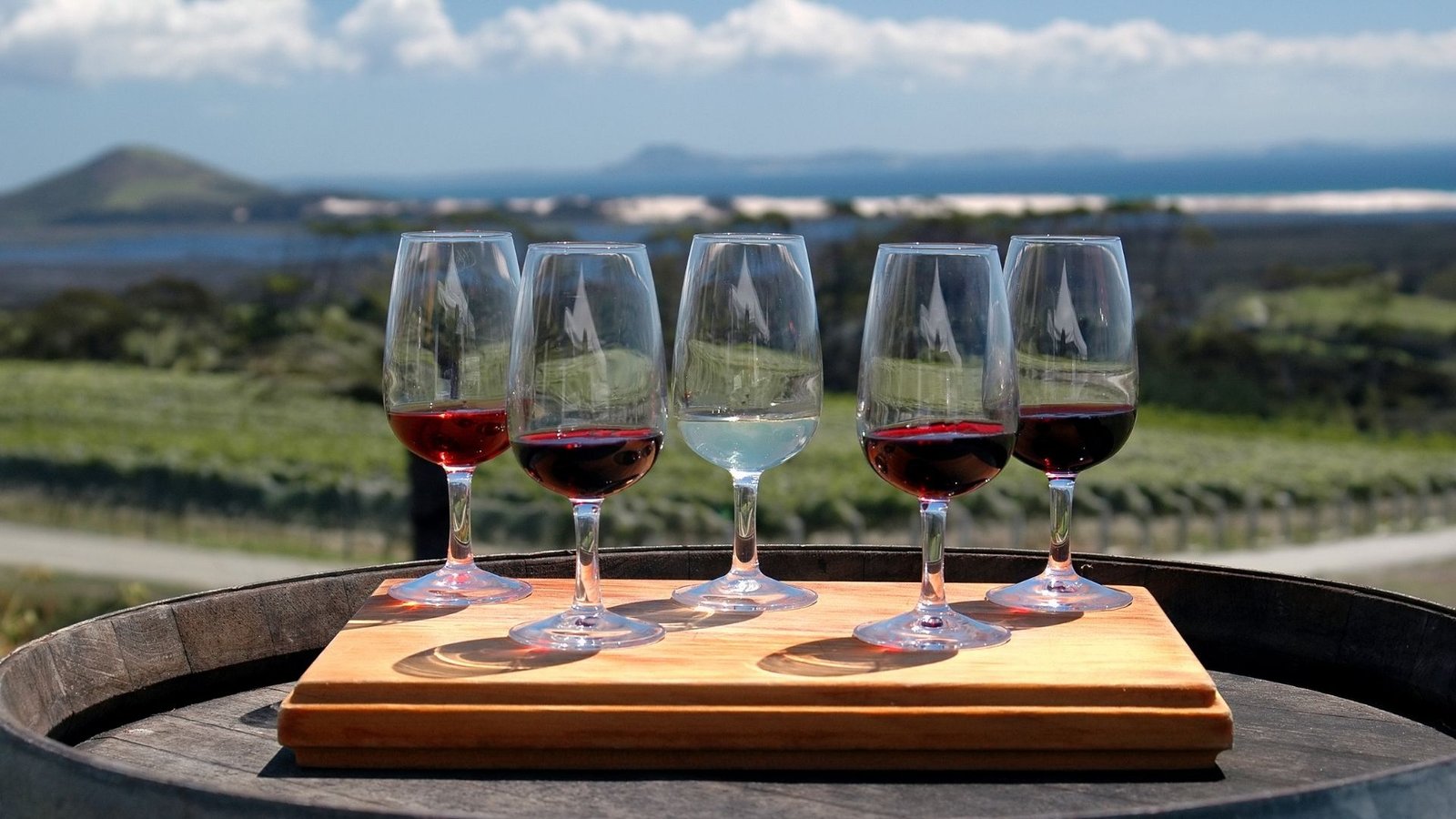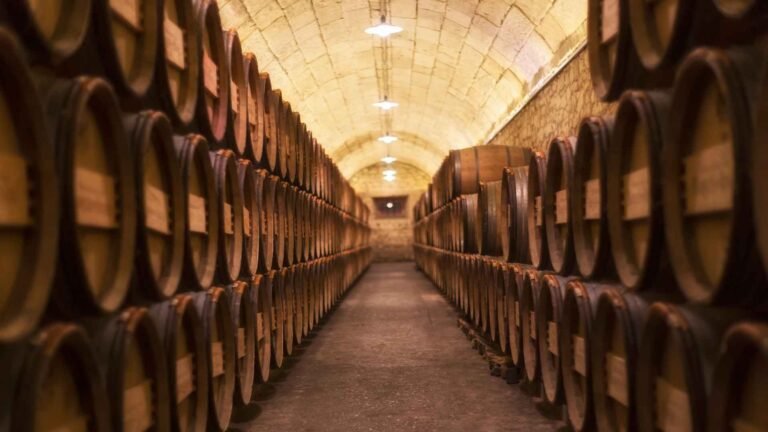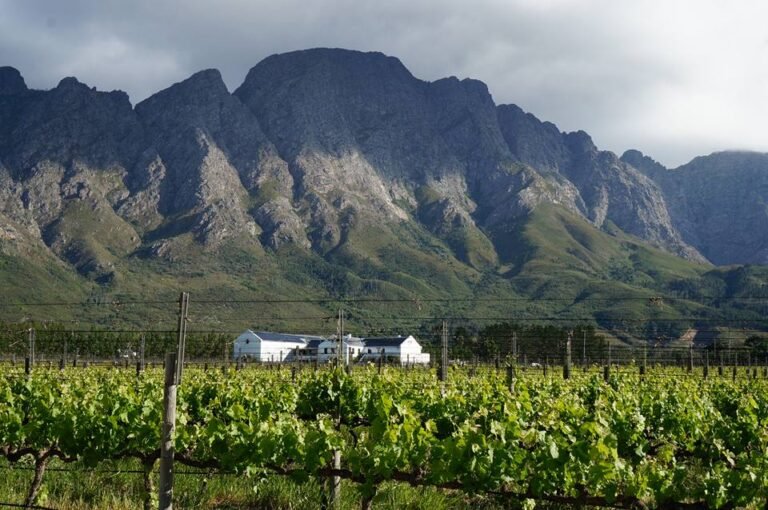What are the steps to carry out a professional wine tasting? In this note, we are going to analyze the procedure of the professional tastings that are made to write the technical specifications of each wine. We are going to learn how to make the evaluation and the corresponding analysis of the product in order to interpret the wine. We can educate our smell and taste to differentiate smells and flavors that will help us to identify the different elements that define a wine and configure its identity.
To taste a wine we must be in a quiet environment, with good light, without aromas of any kind, with clean technical glasses, held by the stem. The technical glasses are closed at the top to contain the aromas and are large to be able to turn the glass so the wine expresses itself better. The glass should be served up to the equator, the thickest place, never up to the top to give it enough space to be able to aerate it. For the tasting you should have water, neutral cookies and a splitter, this is important especially when tasting several products. The bottle is opened without turning it over, with the label facing the guest. It’s necessary to verify that the cork is not damaged and that the liquid has not leaked outside. Some sommeliers smell the cork to see if the wine and/or the cork are contaminated.
- SIGHT ANALYSIS
The first step in discovering a wine is to use our sense of sight. In this first visual phase, we will be able to determine if the wine has good health characteristics, as well as we will be able to define its age and degree of evolution. Through observation, we are going to determine the following aspects:
– Brightness: The brightness of a wine is a sign of good health, it’s related to the acidity level of the wine. Whites and rosés are generally more acidic and brighter than reds.
– Limpidity: The clarity of wine is also a good sign of sanity. The opacity or turbidity of the wine can indicate that it was affected in some way. When we leave a wine open for several days we can observe that it loses its brightness and its clarity, it becomes more cloudy and hazy due to oxidation. However, in the case of unfiltered wines, they may have suspended particles and it does not mean that they are in poor condition. The winemaker defined preserving its properties in a natural way. In that case, a decanter can be used to put sediments down before serving.
– Presence of carbonic gas: Wines that do not have carbonic gas are called still wines and those that do have carbonic gas are called sparkling wines.
– Density or fluidity: To determine this characteristic we must observe the tears or legs, we turn the glass in an anti-clockwise direction, the liquid that remains adhered to the walls of the glass and falls is what we call tears. These tears indicate the density of the wine, given by the dry extract (non-volatile substances), the degree of alcohol, its level of sugar and glycerin. If the liquid that covers the walls of the glass falls quickly, we say that it is a fluid wine, while if it falls slowly it is an unctuous, dense, full-bodied, structured wine. Besides, the level of alcohol, ethanol, generates denser tears.
– Color and Hues: The colour will be different according to the variety and the age of the wine. Over time, red wines tend to lighten while white wines darken. To observe the color, the glass is tilted 45 degrees over a white surface. In whites, you can see the core and the lower part of the glass to find the hues, while in reds you can see the core and the rim at the upper part of the glass to perceive the hues.

WHITE WINE: In the range of yellow, the colours goes from greenish, greyish, steely, pale yellow, straw or faint golden (young wines), lemon, medium golden (mature wines), intense golden (evolved wines) to ocher, amber (wines grated) and brownish, wood (oxidized wines).

ROSÉ WINES: The color will depend on the time of the wine in contact with the skins, the grape variety and the production technique. However, like the whites and reds, in their oxidation they mutate towards orange and brown tones. They range from onion skin, light pink, salmon, cherry, frank pink, raspberry pink to strawberry pink. The intensity of the color can be light, medium or intense.

RED WINES: In the range of reds, they vary from blue, violet, purple (young wines), ruby, cherry (mature wines), garnet (wines with little evolution), brick, orange (evolved wines) and light brown, mahogany or brown (oxidized wines).
– Sediments: Being a product derived from the fermentation of grapes, wine may contain sediments from the skins, seeds or yeasts used in fermentation. The presence of sediments is a natural phenomenon that does not imply a defect in the quality of the product.
2. OLFATIVE ANALYSIS
In the second stage of our evaluation, we will use the sense of smell to determine mainly the variety of the wine, its fermentation and ageing. At this stage, we first do what sommeliers call “first nose”, with the glass still, where we are going to identify the most prominent primary aromas and aromatic intensity. In a second instance or “second nose”, we always turn the glass in an anti-clockwise direction so the aromas and the most subtle notes volatilize. To rotate the glass it ideally can rest on the table to prevent the wine from tipping over. It’s recommended not to use perfumes or creams that interfere with the experience.
– Aromatic intensity: We are going to perceive the aromatic intensity with the glass still, it can be low, medium or high. At higher altitude, more photosynthesis of the vines and greater aromatic intensity.
A) Primary aromas or varietals: The first aromas that we can perceive in the wine will determine the most outstanding features that define the type of varietal, the grapes used in its production, as well as the characteristic terroir: climate, altitude, etc. Among the primary aromas, we will find fruity, floral and herbal notes.
Whites: Common primary scents in whites are white fruits, citrus, tropical fruits, herbal, vegetable and white floral scents.
Reds: The common primary aromas in red wines are red fruits, black fruits and berries, flowers such as roses and violets and herbs or vegetable aromas.
Rosés: The primary aromas present in rosé wines are fresh or ripe red fruits, whether berry or stone (raspberries, strawberries, cherries and plums), flowers (pink, violet, white flowers). There are pinot noir, bonarda, malbec, merlot, garnacha and syrah rosés, among others. As they age, both the whites and rosés and the reds are less expressive, they lose their freshness and fruity expression. Aging wines gain in aromatic complexity.
B) Secondary or fermentation aromas: Secondary aromas refer to the type of alcoholic and malolactic fermentation to which the wine has been subjected. The choice of one or another type of yeast by the winemaker in the manufacturing process will give rise to different aromas and flavors. Among the secondary aromas we can mention the aromas of butter, yogurt, banana and nuts. In red wines a malolactic fermentation is always carried out while in whites it may not be done, or it may be done partially to preserve the natural acidity of the wine. It’s normally done when the wines are intended for barrel ageing. The wines with malolactic fermentation acquire an unctuous, enveloping, creamy texture.
C) Tertiary aromas or bouquet: These types of aromas derive from the ageing process of the wine in barrels and stowage in the bottle. They are the result of the evolution of the wine and the micro-oxygenation to which it was exposed. There are oak, cherry, acacia, new barrels, toasted barrels, barrels that were previously used for other drinks such as whiskey, bourbon, cognac, etc. This will lead to differentiated notes in the final product, for example aromas of vanilla and coconut (characteristic of American oak), cloves, pepper and dried fruits (characteristic of French oak). Besides, according to the levels of toasting of the wood, we can perceive notes of mint, eucalyptus, wood, tobacco, toasted bread, smoked, coffee and leather.
Barrel-aged wines can be in the bottle for longer, while young wines are fresher, fruity, lighter, with high acidity and their consumption is recommended within two years of their harvest. The aging of the whites in short times gives the white wine complexity, a greater body, providing spicy aromas and balancing the acidity. More extended aging gives the wine even more structure, they are more unctuous wines with hints of butter, due to malolactic fermentation. In general, rosé wines do not go through the barrel because the aging softens the typical aromas of the varietal.
Aromas are grouped into aromatic families: fruits, spices, flowers. To analyze the descriptors, we are going to use the aromatic wheel shown below as a reference. It can be strange the presence of so many elements not related with the production of wine in the aromatic wheel however, what happens is that in nature there are molecules shared between different elements. For example, green pepper has a chemical called pyrasin, which cabernet sauvignon also has (this explains why we find this aromatic descriptor).

DESCRIPTORS OF SOME VARIETIES OF WHITE GRAPE
CHARDONNAY Pineapple / Peach / Pear / Sometimes Grapefruit / Apple. If it has malolactic fermentation, notes of banana and butter may appear. If the wine was aged in barrels, we can perceive aromas of vanilla and coconut.
SAUVIGNON BLANC Pink Grapefruit / Lemon / Herbaceous such as asparagus, green pepper, peas and even rue / Passion fruit in more tropical areas.
TORRONTES Muscat grape since it’s one of the grapes that make up the crossing with the Creole grape / Citrus / Azar / White flowers like jasmine.
VIOGNIER Yellow stone fruits such as peach, apricot, pelon / Grapefruit and citrus fruits / Apples / White flowers / When their destination is late harvest, they gain in aromatic intensity.
RIESLING Quince / Green apple / Passion fruit / Graphite and Oil over time.
SEMILLON It’s found in blends, dry and sweet wines. Citrus fruit / Mango / Honey. Tea and Toasted Bread in the most advanced wines.
DESCRIPTORS OF SOME VARIETIES OF RED GRAPE
CABERNET SAUVIGNON Black fruits such as blackberry / Green, red, yellow or orange bell pepper / Pepper / Eucalyptus / Licorice. When it has passed through the barrel, toasted aromas such as tobacco emerge.
MALBEC Ripe red fruits like cherry / Plums / Roses and violets / Jam.
MERLOT It has the same descriptors as Cabernet Sauvignon but with less intensity. Black fruits such as blackberry, cherry or cassis/ Green, red, yellow or orange pepper / Pepper / Licorice.
SYRAH Red fruits such as raspberries, cherries / Ripe red fruits such as strawberries / Black fruits such as blackberries, blueberries, cassis / Spices such as pepper or cinnamon / Leather.
BONARDA It’s a variety of few tannins / Black cherries / Red fruits such as raspberries, strawberries and cherries / Black fruits such as blackberry, cassis.
PINOT NOIR Fresh red fruits (raspberry, sour cherries, lingonberries) / Black fruits (black blueberries, blackberries) / Earthy aromas or strands of tea, depending on the terroir.
TEMPRANILLO In its youth it’s shy in aromas, it unfolds over time. Raspberries / Strawberries / Spices / And as time goes by, we can find aromas of prunes, figs, raisins.
3. TASTE ANALYSIS
It’s recommended in a tasting not to eat foods with very strong flavors, chewing gum or candies before that can change our taste. The ideal is to take small sips to aerate the wine in the mouth. Our tongue has taste buds with differentiated sectors to perceive the different flavors: we perceive the sweet taste with the tip of the tongue, the salty taste with the back and front sides of the tongue, the acid taste on the central sides and the bitter taste at the bottom of the tongue in the center. That is why we must distribute the wine well in the mouth to be able to appreciate the residual sugar, the degree of alcohol, the freshness that the acidity gives and the bitterness that the tannins provide in the case of red wines. Alcohol produces a warm mouthfeel, acidity generates salivation and freshness, and tannins feel bitter, generating astringency and dryness in the mouth.
– Attack phase: It is the first impact of the wine in our mouth, which can be kind, silky or smooth, elegant or astringent, harsh if it is very tannic or sharp, biting if it has a high level of acidity. It can be cool or warm. Acidity can be marked, prominent, or balanced. The lack of acidity generates a flat, dull wine, without vivacity.
– Body: It’s felt in the middle of the tongue, it can be more dense in the mouth due to the tannins or more fluid. Tannins are generally more marked in young wines. Whites and rosés have practically no polyphenols; however, aging in oak provides tannins from the wood with a certain bitterness, both to whites and reds that were aged in oak. Tannins neutralize an enzyme, coagulate saliva and generate that sensation in the mouth of dryness and astringency.
– Aromas on the palate: They can be the same that we identify in the olfactory phase, or they can be new, especially if it’s a wine of low aromatic intensity.
– Balance and Equilibrium: We are going to analyze the balance between acidity and alcohol in white and rosé wines, and between acidity, alcohol and tannins in reds. We must identify if there is a balance between the acidity of the wine and the alcohol. If alcohol does not cause a nuisance, we can say that it’s balanced.
– Acidity: Acidity can be marked, medium or low. It brings freshness, balance and liveliness to the wine. The presence of carbon dioxide, on the other hand, attenuates acidity and tannicity and reduces sugar levels. In general, white wines are more acidic than rosés while these, are more acidic than reds.
– Tannins: To avoid the aggressivity of the tannins, the grape must be harvested when the polyphenols in the skin are already ripe. The time in the bottle helps them to be softer, however, if the harvest was before ripening, it’s no longer possible to solve the error. Hard-skinned varieties like Cabernet Sauvignon have harsher tannins, while soft-skinned varieties like Malbec have softer tannins. Tannins can be sweet, kind, silky, ripe, incipient, firm, marked, well-integrated or rough, green, hard, astringent, invasive and unbalanced when the wine has a defect.
– Finish in the mouth or aftertaste: Once we spit or swallow the wine, we will analyze the finish in the mouth, which can be bitter, fruity, spicy, floral.
– Persistence: At the last stage, we will detail the persistence of the wine in the mouth, which can be short (2-3 seconds), medium (5-7 seconds), long (8 seconds) or persistent (12 seconds).
– Other sensations in the mouth: You can perceive a sensation of minerality or salinity derived from some minerals in wine, such as potassium bitartrate / Another sensation in the mouth is the needle, derived from the presence of carbonic gas that some whites naturally have, such as those green wines from Portugal.
Finally, beyond the characteristics of each wine, the sommelier can carry out an analysis and recommend one or another type of wine according to the quality, price, situation and pairing with the different dishes. A wine can highlight the characteristics of a good dish in gastronomic alchemy.




